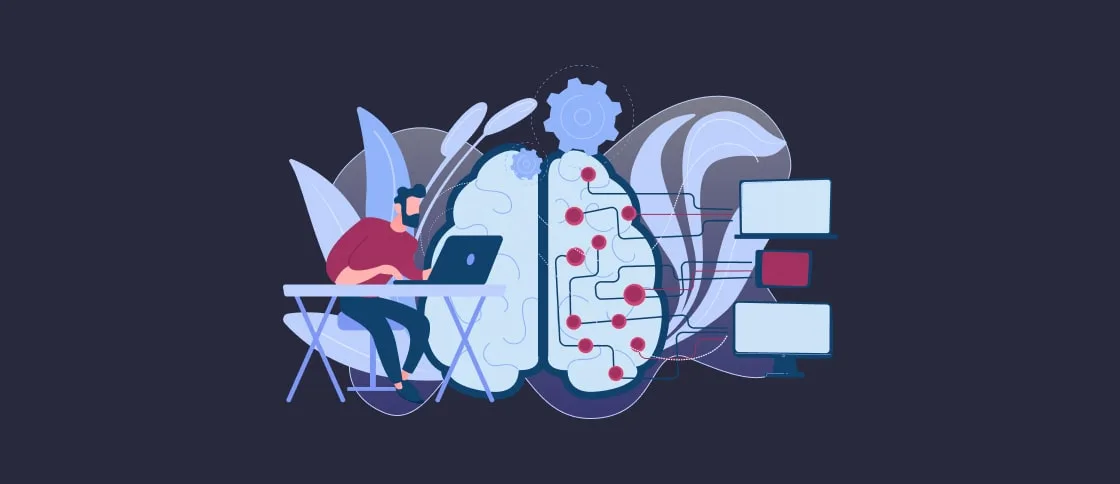- 5 AI Use Cases to Extend and Speed Up Legacy Systems
- #1 AI-Powered Workflow Automation
- #2 AI for Smarter Security and Surveillance
- #3 Adaptive Learning in Monitoring Workflows
- #4 AI-Driven Decision Support
- #5 AI-Powered Document and Data Processing
- Business Benefits of Updating Legacy Systems with AI
- Cost Savings
- Process Speed
- Risk Reduction
- Future Readiness
- Want to Integrate AI Into Your Systems?
Many systems were built 20-25 years ago and have never been updated since. They are no longer compliant with modern standards and regulations. They also struggle with speed, efficiency, and slowdown processes. They often show errors and failures.
But instead of replacing them, companies can extend their value with AI solutions for legacy systems. This approach improves performance and creates new opportunities. And there is no need for a full rewrite.
In this article, we show you five practical AI cases that helped breathe new life into applications written long ago.
5 AI Use Cases to Extend and Speed Up Legacy Systems
#1 AI-Powered Workflow Automation
Legacy applications can be tightly integrated into the company’s workflows. And when they are old, they are likely to slow down the processes. They are likely to deliver outdated data and miss critical deadlines. These systems are error-prone and often manual.
But one of the options to enhance these systems is modernizing them with AI. Companies can automate repetitive tasks such as form validations or compliance checks. This allows employees to focus on more important tasks.
For example, Softacom worked with a healthcare provider to automate their onboarding process. They had no AI automation, so every client setup required hands-on SQL/database work. And customization required developer input. Matching with historical setups was a problem, too. The whole onboarding process could take up to 5 days. But after embedding AI agents into their workflow, we managed to cut this process down to 5 hours.
#2 AI for Smarter Security and Surveillance
Security workflows often depend on legacy CCTV or monitoring systems. These systems are reliable for recording but they cannot analyze what they capture. Employees must spend hours staring at the video feeds. This leads to frustration, missed incidents and delayed reactions.
AI can transform these workflows by adding real-time anomaly and object detection. Instead of recording, the system identifies unusual behavior or specific objects. It quickly alerts the team.
At Softacom, we had several cases working with security systems. For one company, we integrated DeepML anomaly detection into their security platform. The purpose was to spot suspicious activity and unauthorized objects in real time. They also had a problem with false alarms, which was solved by AI.
Another example was us working with a pawnshop chain. Softacom embedded an AI model into their CCTV system to detect armed individuals. The integration provided in-time alerts, without replacing the legacy video infrastructure.
#3 Adaptive Learning in Monitoring Workflows
Security systems often need to detect and track new objects as environments change. For a legacy system, this often means manual reprogramming, updates, and testing. And this is a time-consuming and costly process.
AI with adaptive learning optimizes workflows by teaching systems to recognize new objects. Businesses get flexible software that improves over time.
For example, Softacom developed an AI-driven object detection solution for a monitoring system. It could learn, making the platform scalable and future-proof.
#4 AI-Driven Decision Support
ERP, finance and logistics systems written in old code often hold years of valuable data. But they provide only basic reporting. Employees spend hours or days preparing static reports. And managers struggle to make timely decisions.
AI can optimize these workflows by adding predictive analytics and intelligent insights. It is faster to spot patterns and trends and give recommendations for the next steps. This helps legacy systems be a proactive decision-support tool. And all without a full rewrite.
#5 AI-Powered Document and Data Processing
Back-office workflows in CRMs or accounting systems often rely on manual document handling. It includes invoices, purchase orders, contracts or client records. This can be a slow process prone to human error.
AI can be integrated into these legacy workflows to automatically extract, classify data. This helps reduce manual effort, cuts down on mistakes and speeds up entire processes.
Business Benefits of Updating Legacy Systems with AI
Let’s go through the list of benefits a business receives by embedding AI into their systems:
Cost Savings
Full rewrite of a legacy system can cost millions and take years. That is why embedding AI into software allows companies to avoid full replacement. At the same time, it gains modern capabilities. This extends the lifespan of the systems tightly integrated into business operations.
Process Speed
Many workflows are slow because they rely on manual processes, monitoring and reporting. AI can speed them up by automating repetitive tasks and analyzing large datasets. Tasks that once took days can be completed in a couple of hours or even minutes with AI.
Risk Reduction
Outdated systems are prone to errors and security vulnerabilities. AI helps mitigate these risks by making legacy software smarter and more reliable. It helps reduce human error and ensure better alignment with regulatory requirements.
Future Readiness
The biggest challenge with legacy systems is that they were built for past needs. But not for future growth. AI makes them adaptive and flexible. The systems learn from new data, recognize patterns and continue to evolve. This allows businesses to stay competitive and ensure that legacy systems support innovation.
Want to Integrate AI Into Your Systems?
Your existing system can become faster, smarter and more efficient with AI integration. At Softacom, we have helped companies across various industries. We worked with healthcare, security, manufacturing, and more. Are you considering how AI could extend the life of your legacy systems? Our legacy software migration agency can help you assess the options and design a solution that fits your goals. Contact us today to start the conversation.






